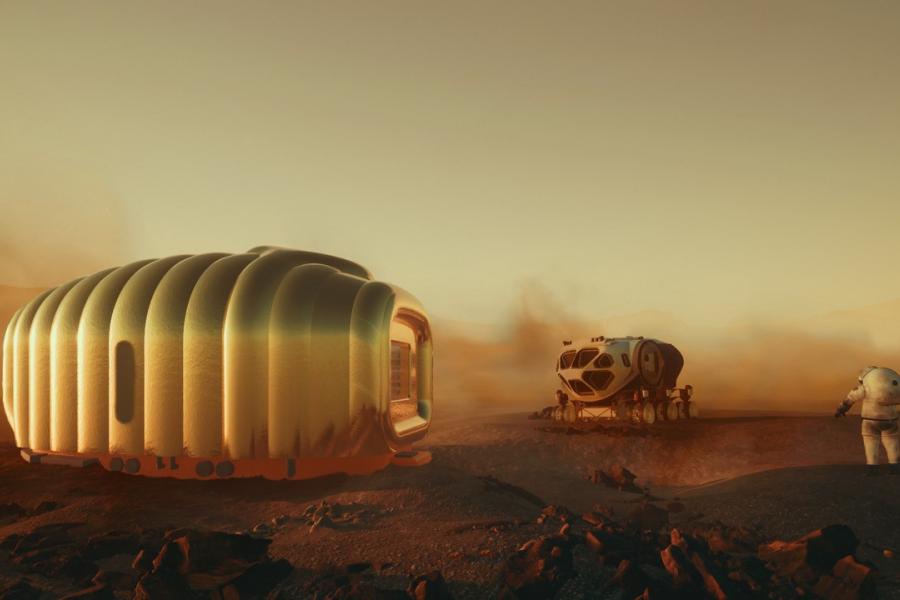Owen Pearce and Guillem Anglada

From Antarctic architecture to multi-planetary civilisations
This talk will philosophically touch on why we might want to become multi-planetary species and the similarities between remote architecture on earth and that off-world. Starting in the Antarctic and moving to Mars, the talk explores architectural projects and design considerations for earth-based extreme environments with learnings between the Antarctic and off-world construction. It will provide a detailed review of the British Antarctic base Halley VI, Mars city states proposals by the Sustainable Off-World Research Network (SONet) and a prototype Martian House exploring possible lifestyle changes required to live on Mars.
We will then review what would be the requirements in terms of infrastructure and resources to sustain human life on Mars, and discuss how close we are to make this possible. In this exercise we will appreciate the role of mastering energy sources to achieve this goal and why, given the current geopolitical and economic context on Earth we may or may not reach that point. We will conclude by applying these arguments into the framework of the search for life elsewhere and how it fits the so-called Fermi Paradox, which states that if (intelligent?) life is a natural occurring phenomenon why we do not see evidence of it anywhere given the huge number of potentially habitable planets that we now know they exist.
Speaker Bios
Guillem Anglada Escudé, PhD.
Ramón y Cajal Fellow
Institut de Ciències de l'Espai-CSIC
Institut d'Estudis Espacials de Catalunya (IEEC)
https://angladaspace.wordpress.com/biography/
Guillem Anglada-Escudé is a Astrophysicist working at the Institute for Space Ciences (ICE/CSIC) in Spain. His expertise is on the study of exoplanets, data analysis and instrumentation for astronomy and space sciences. He is also an advocate for building up sustainable infrastructures for permanent use and human activities in Space. with others, he created the Sustainable Offworld Network, which is a collaboration to bring academics and professionals together to develop concepts for space utilization. In 2016, he led the team that discovered Proxima b, the nearest terrestrial exoplanet to Earth, and participated in the discovery of many other so-called 'potentially habitable' worlds. He participates in a number of projects searching for the nearest exoplanets and mission concepts to characterize them in the search for evidence for life beyond the Solar System.
Owen Hughes Pearce, RIBA ARB
Oxford Brookes University
Director of PEARCE+
www.pearce-plus.com
Owen Hughes Pearce trained as an architect at The University of Westminster and Oxford Brookes University, setting up PEARCE+ in 2019. He is also a Lecturer at Oxford Brookes University, focusing on architecture for other worlds, wicked problems, future living and generational issues.
PEARCE+ is an innovative architectural practice - designing, fabricating and installing playful and idiosyncratic projects. Since 2019, Owen has acted as the design lead for the accommodation of five pods and creator space on top of the East Quay cultural centre in Watchet, as well as creating a Martian House in Bristol. Before founding his practice, he worked on a wide range of projects in the Antarctic for extreme environment specialist Hugh Broughton Architects.
